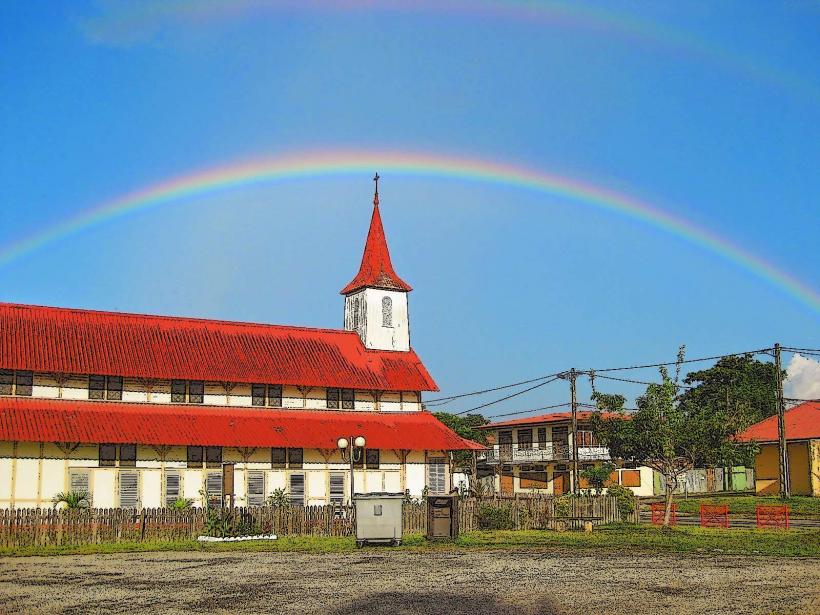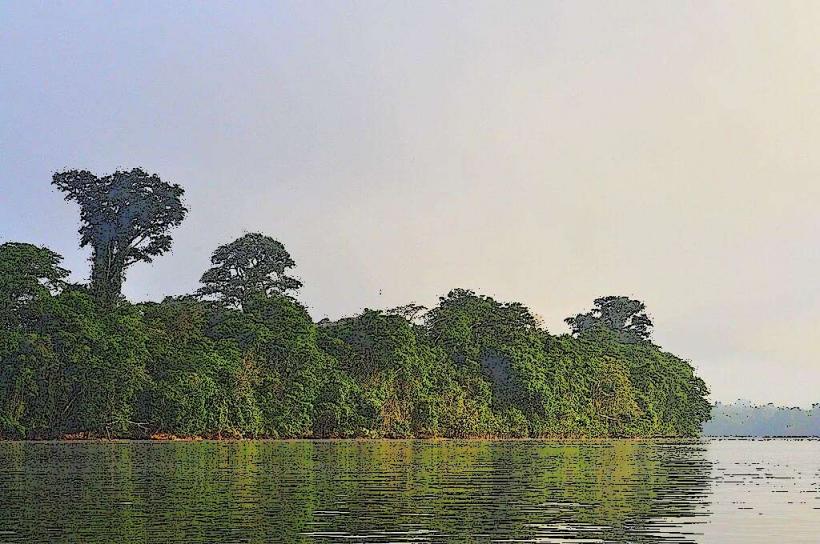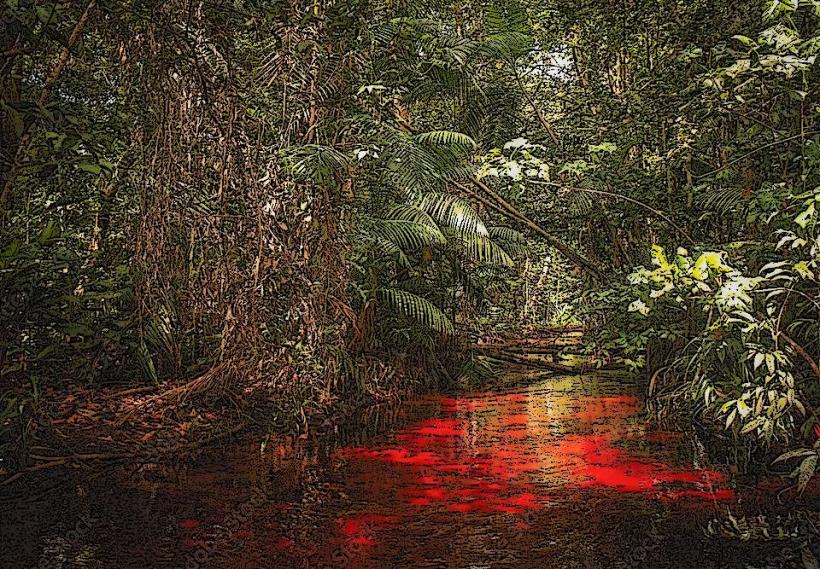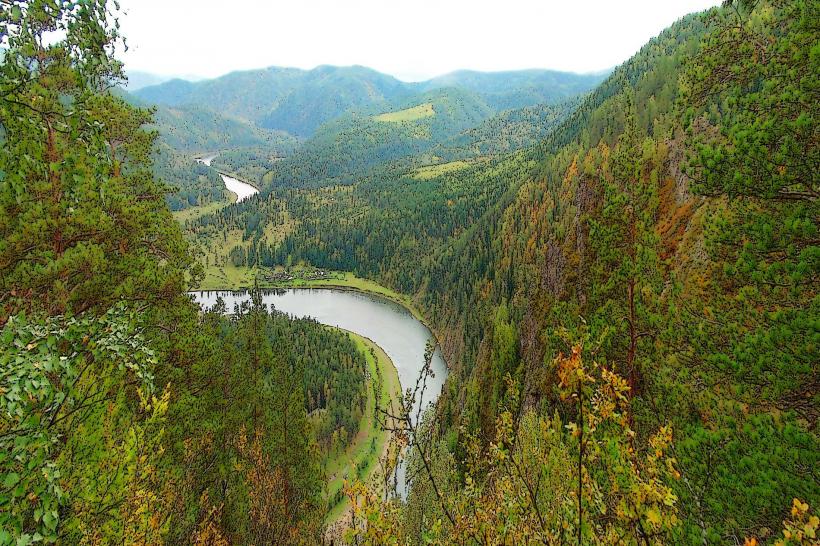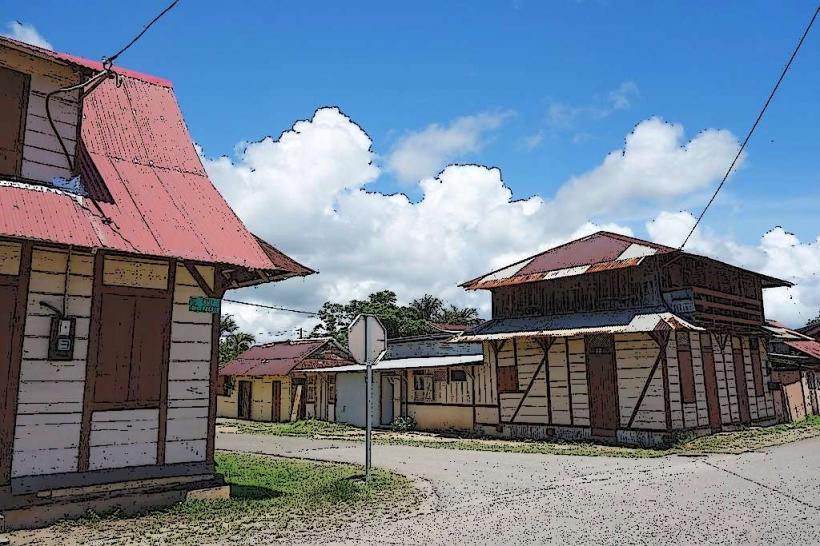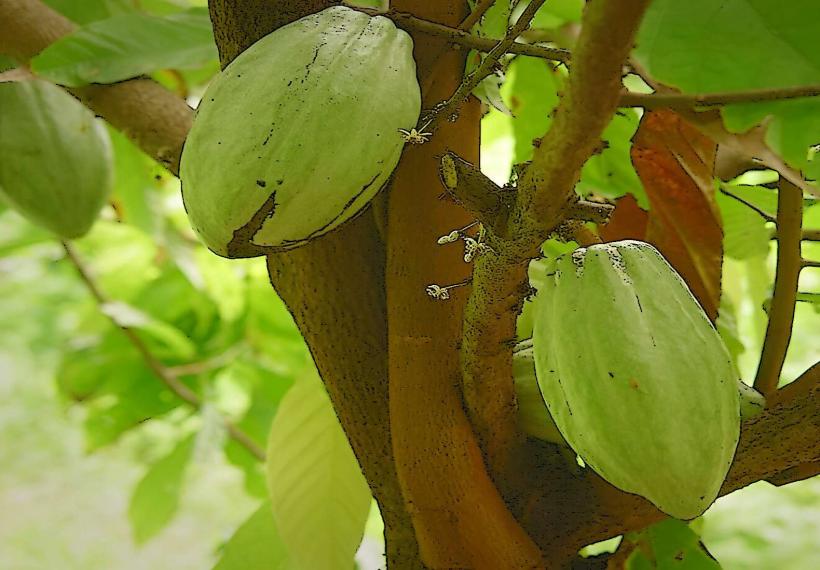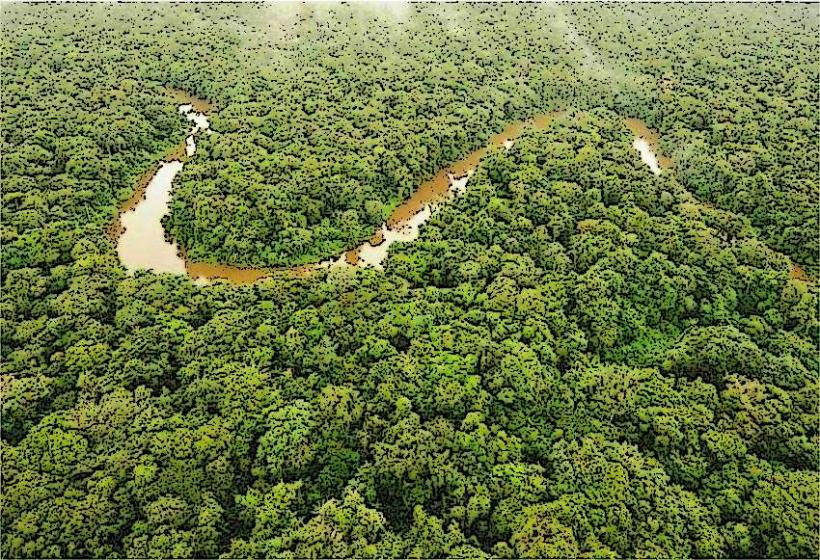Information
Landmark: Forest of ManaCity: Iracoubo
Country: French Guiana
Continent: South America
The Forest of Mana is a vast and ecologically significant rainforest located in French Guiana, part of the Guiana Shield, which extends through northern South America. This forest is situated near the village of Mana, along the Mana River, in the western part of French Guiana. The forest is an integral part of the region's biodiversity hotspot and plays a crucial role in maintaining the health of local ecosystems.
Geography and Location
The Forest of Mana is located within the Mana commune in the western portion of French Guiana, an overseas region of France. It is characterized by dense tropical rainforest and is part of the Guiana Shield, which includes the rainforests that stretch across French Guiana, Suriname, Brazil, and Venezuela. The forest is surrounded by a series of rivers, including the Mana River, which flows into the Atlantic Ocean. The region is also marked by wetlands and floodplains, providing a diverse range of habitats.
The forest is relatively remote and is one of the less disturbed rainforests in French Guiana, although it is still influenced by human activities such as agriculture, logging, and illegal mining. The Mana River, which runs through the forest, provides water for the local communities and serves as an important transportation route for both people and goods.
Flora and Biodiversity
The Forest of Mana is home to a rich diversity of plant and animal species, many of which are endemic to the region or the Guiana Shield. The rainforest's vegetation is characterized by tall trees, vines, shrubs, and a variety of aquatic plants along the river and floodplain areas. The seasonal flooding of the river deposits nutrient-rich sediments that support a high level of productivity in the forest.
Trees and Plant Life
- Tall Trees: The forest is dominated by towering evergreen trees, such as kapok trees and cedar, that form the upper canopy. These trees can grow up to 40 meters (131 feet) tall and provide shelter for many species of animals.
- Tropical Plants: The forest also supports a variety of tropical plants, including ferns, palms, and orchids. Many of these species are adapted to the humid, lowland environment of the forest.
- Medicinal Plants: Numerous plants in the Forest of Mana are used by local communities for medicinal purposes. Indigenous people in the area have long relied on the forest's plant resources for treating various ailments.
Wildlife
The Forest of Mana is home to a vast array of animal species, including mammals, birds, reptiles, amphibians, and insects. Many of these species are adapted to the tropical environment and play vital roles in the ecosystem.
- Mammals: The forest supports various species of monkeys, including howler monkeys, capuchin monkeys, and squirrel monkeys. Larger mammals such as jaguars, pumas, and otters also inhabit the region. Smaller mammals like agoutis and armadillos can be found in the underbrush.
- Birds: The Forest of Mana is a haven for birdwatchers, with a wide variety of species, such as harpy eagles, toucan species, parrots, and herons. The biodiversity of birds in the region is exceptionally high due to the abundant food sources provided by the forest and its rivers.
- Reptiles and Amphibians: The region also houses reptiles like caimans, snakes, and turtles, as well as amphibians such as frogs and toads. These animals thrive in the humid and wet environment provided by the rainforests and rivers.
- Insects: Insects play an essential role in the forest's ecology, including ants, butterflies, and mosquitoes, which are crucial for pollination, decomposition, and the food chain.
Environmental Importance
The Forest of Mana is a crucial part of the Guiana Shield rainforest, which is considered one of the world's most biodiverse and ecologically important regions. The forest contributes to the global carbon cycle by storing large amounts of carbon in its trees and soil. It also plays a role in regulating local climate conditions and water cycles.
- Carbon Storage: The dense vegetation of the forest, especially its tall trees, acts as a significant carbon sink, helping to mitigate climate change by absorbing carbon dioxide from the atmosphere.
- Water Regulation: The forest is integral in regulating the water cycle in the region, with the Mana River and its tributaries serving as conduits for the movement of water. Seasonal flooding also helps replenish the nutrient levels in the soil, supporting agriculture in the region.
Human Interaction and Threats
While the Forest of Mana is still relatively untouched compared to other parts of French Guiana, it faces several human-related threats that jeopardize its health and integrity.
1. Deforestation: Logging and land clearing for agriculture, especially rice farming and cattle ranching, have led to the degradation of some areas within the forest. Deforestation is a significant issue in the broader region of French Guiana, and while the Forest of Mana remains largely protected, illegal logging remains a concern.
2. Illegal Mining: Illegal gold mining, particularly in the upper reaches of the Mana River, is a serious threat to the forest. The mining activities often involve the use of mercury, a toxic substance that contaminates the river and surrounding environments, endangering both wildlife and human populations.
3. Pollution: In addition to mercury contamination from illegal mining, agricultural runoff, waste disposal, and human settlements also contribute to water pollution in the region. This pollution threatens the health of the river’s aquatic ecosystems and the species that depend on it.
4. Climate Change: As with many tropical forests, the Forest of Mana faces the long-term threat of climate change, which could alter precipitation patterns, increase temperatures, and lead to more frequent and severe flooding, all of which would impact the forest’s delicate ecosystem.
Conservation Efforts
To address these threats and ensure the preservation of the Forest of Mana and its biodiversity, several conservation initiatives have been established. French Guiana is part of France's national environmental policies, and the French government has implemented various programs to protect its natural resources.
- Protected Areas: Some parts of the Forest of Mana and surrounding regions are designated as protected areas under French law. These include national parks and nature reserves, where logging, mining, and other destructive activities are restricted.
- Sustainable Practices: There is a growing emphasis on promoting sustainable agricultural practices and eco-tourism to provide alternative livelihoods for local communities while preserving the environment.
- Research and Monitoring: Efforts to monitor and research the biodiversity of the forest are crucial for understanding its ecological health. Environmental organizations, along with the French government, support scientific research aimed at conservation and sustainable management.
Conclusion
The Forest of Mana is a vital and ecologically rich rainforest in French Guiana. It is home to diverse flora and fauna, many of which are endemic to the Guiana Shield, and it plays an important role in global environmental processes such as carbon storage and water regulation. While the forest faces threats from deforestation, illegal mining, and climate change, efforts to preserve it through conservation and sustainable development are crucial to maintaining this unique and vital ecosystem for future generations.

